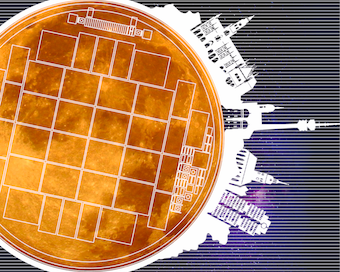Speaker
Description
At the High-Luminosity upgrade of the Large Hadron Collider (HL-LHC), the particle density will increase and fluences up to 2.5$\times10^{16} n_{eq}$/cm$^2$ are expected for the innermost pixel layer of the ATLAS and CMS experiments after an integrated luminosity of 4,000 fb$^{-1}$. To meet these requirements, a new generation of CNM 3D pixel sensors with small pixel sizes of 50x50 and 25x100 $\mu$m$^{2}$ and reduced electrode distances are developed. For the first time, pixel detectors are irradiated and studied up to the unprecedented fluence of 3$\times10^{16} n_{eq}$/cm$^2$, i.e. beyond the full expected HL-LHC life time to explore the limits of the 3D technology. Since a readout chip with the desired pixel size developed by the RD53 collaboration was not yet available, first prototype small-pitch pixel sensors were designed to be matched to the existing ATLAS IBL FE-I4 readout chip for testing. Irradiation campaigns with such pixel devices have been carried out at KIT (Karlsruhe) with a uniform irradiation of 23 MeV protons up to a fluence of 1$\times10^{16} n_{eq}$/cm$^2$, as well as at CERN-PS with a non-uniform irradiation of 23 GeV protons in several steps up to a peak fluence of 3$\times10^{16} n_{eq}$/cm$^2$. The hit efficiency has been measured in several beam tests at the CERN-SPS. The performance of these devices is significantly better than for the previous generation of 3D detectors or the current generation of planar silicon pixel detectors, demonstrating the excellent radiation hardness of the new 3D technology.
